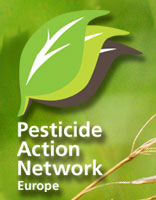 Since the existence of pesticide regulation in Europe (Directive 91/414), no strict criteria were used for approving pesticides in Europe (put on Annex I, the positive list). Anything could get an approval. Voting by national representatives (a difficult system with ‘qualified majorities’ and ‘blocking minorities’) in the Standing Committee determined the outcome. No matter if a pesticide was a carcinogen of a full PBT (persistent, bioaccumulative, toxic) according to the Stockholm convention, an EU-approval was possible.
Since the existence of pesticide regulation in Europe (Directive 91/414), no strict criteria were used for approving pesticides in Europe (put on Annex I, the positive list). Anything could get an approval. Voting by national representatives (a difficult system with ‘qualified majorities’ and ‘blocking minorities’) in the Standing Committee determined the outcome. No matter if a pesticide was a carcinogen of a full PBT (persistent, bioaccumulative, toxic) according to the Stockholm convention, an EU-approval was possible.
This will change once the new pesticide Regulation 1107/2009 is used. While not quite ideal (EU decisions are by nature a compromise), for the first time we have strict criteria for pesticides, the so-called “cut-off” criteria.
For human health these ‘cut-off’criteria are shown below, Annex II, 3.6.2 to 3.6.5:
3.6.2. An active substance, safener or synergist shall only be approved if, on the basis of assessment of higher tier genotoxicity testing carried out in accordance with the data requirements for the active substances, safeners or synergists and other available data and information, including a review of the scientific literature, reviewed by the Authority, it is not or has not to be classified, in accordance with the provisions of Regulation (EC) No 1272/2008, as mutagen category 1A or 1B. EN 24.11.2009 Official Journal of the European Union L 309/41
3.6.3. An active substance, safener or synergist shall only be approved, if, on the basis of assessment of carcinogenicity testing carried out in accordance with the data requirements for the active substances, safener or synergist and other available data and information, including a review of the scientific literature, reviewed by the Authority, it is not or has not to be classified, in accordance with the provisions of Regulation (EC) No 1272/2008, as carcinogen category 1A or 1B, unless the exposure of humans to that active substance, safener or synergist in a plant protection product, under realistic proposed conditions of use, is negligible, that is, the product is used in closed systems or in other conditions excluding contact with humans and where residues of the active substance, safener or synergist concerned on food and feed do not exceed the default value set in accordance with Article 18(1)(b) of Regulation (EC) No 396/2005.
3.6.4. An active substance, safener or synergist shall only be approved if, on the basis of assessment of reproductive toxicity testing carried out in accordance with the data requirements for the active substances, safeners or synergists and other available data and information, including a review of the scientific literature, reviewed by the Authority, it is not or has not to be classified, in accordance with the provisions of Regulation (EC) No 1272/2008, as toxic for reproduction category 1A or 1B, unless the exposure of humans to that active substance, safener or synergist in a plant protection product, under realistic proposed conditions of use, is negligible, that is, the product is used in closed systems or in other conditions excluding contact with humans and where residues of the active substance, safener or synergist concerned on food and feed do not exceed the default value set in accordance with point (b) of Article 18(1) of Regulation (EC) No 396/2005.
3.6.5. An active substance, safener or synergist shall only be approved if, on the basis of the assessment of Community or internationally agreed test guidelines or other available data and information, including a review of the scientific literature, reviewed by the Authority, it is not considered to have endocrine disrupting properties that may cause adverse effect in humans, unless the exposure of humans to that active substance, safener or synergist in a plant protection product, under realistic proposed conditions of use, is negligible, that is, the product is used in closed systems or in other conditions excluding contact with humans and where residues of the active substance, safener or synergist concerned on food and feed do not exceed the default value set in accordance with point (b) of Article 18(1) of Regulation (EC) No 396/2005. By 14 December 2013, the Commission shall present to the Standing Committee on the Food Chain and Animal Health a draft of the measures concerning specific scientific criteria for the determination of endocrine disrupting properties to be adopted in accordance with the regulatory procedure with scrutiny referred to in Article 79(4).
Pending the adoption of these criteria, substances that are or have to be classified, in accordance with the provisions of Regulation (EC) No 1272/2008, as carcinogenic category 2 and toxic for reproduction category 2, shall be considered to have endocrine disrupting properties.
In addition, substances such as those that are or have to be classified, in accordance with the provisions of Regulation (EC) No 1272/2008, as toxic for reproduction category 2 and which have toxic effects on the endocrine organs, may be considered to have such endocrine disrupting properties.
Derogations can be granted in case there are no alternatives (defined in Art. 4.7). For the environment, the criteria are PBT or POP as defined in Annex II, 3.7 (not shown here).
A big debate has been running for quite some time how many pesticides would fall ‘victim’ to these cut-off criteria. Chemical industry, supported by UK government body PSD (now HSE) were quick to say 85% of the active substances would disappear. Others like Commission and Member State Sweden estimated a maximum of 5% of the pesticides would be banned with these criteria. Sweden also presented a list of 23 active substances they felt would be banned.
Useful information



